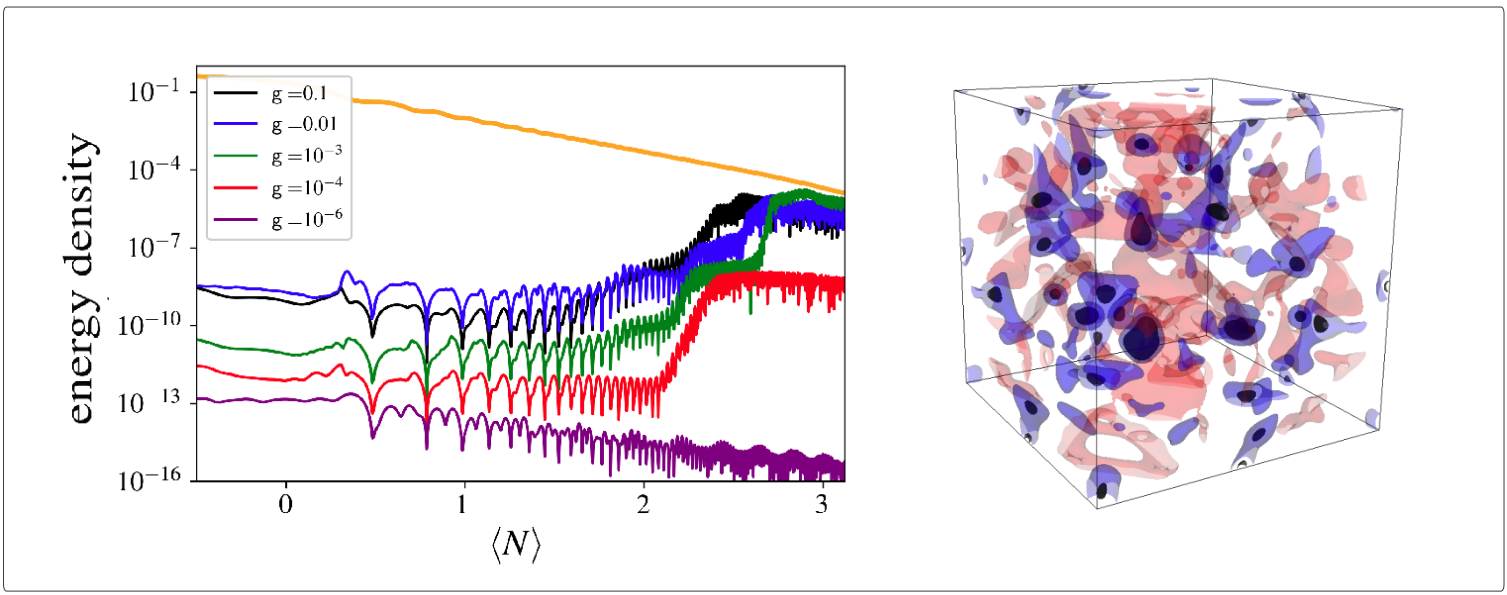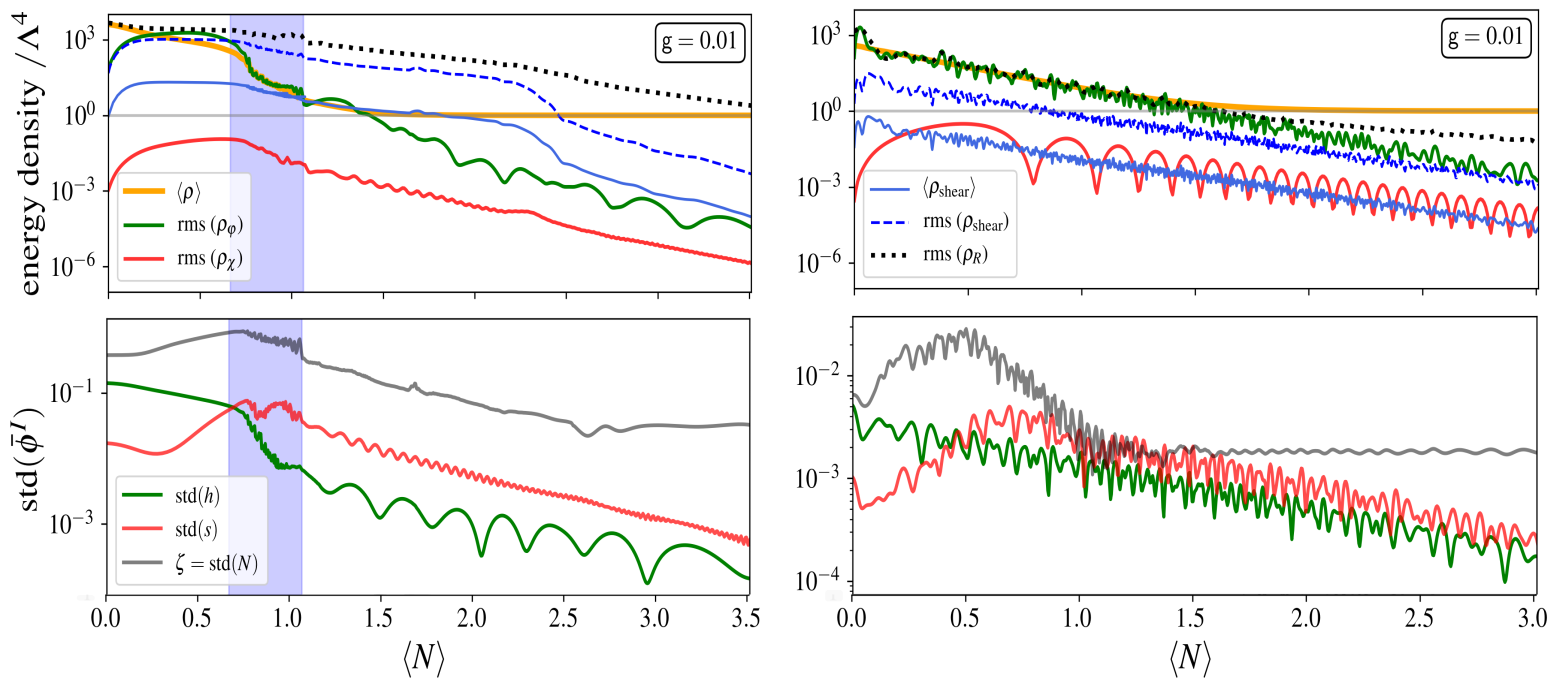
New study on Higgs preinflationary and preheating dynamics using numerical General Relativity.
The inflationary paradigm postulates an early phase of accelerated expansion of the Universe. Such a period provides an explanation for the observed large-scale homogeneity and flatness in the cosmos. After the end of inflation, the universe would have gone through a phase where the energy of the inflaton is transferred to Standard Model particles, heating up the universe (aggressively!) leading to a bath of ultrarelativistic particles behaving like radiation. This phase is known as reheating.
Traditionally the problem of initial condition for inflation (i.e. Can inflation start from highly inhomogeneous initial conditions?) has been treated separately from studies of reheating. However, they are still connected. To allow for a parametric-type reheating, i.e. through resonances occurring while oscillating the bottom of the potential, the inflaton must be allowed to interact with (or decay to) other fields. So, again, one could raise the question: Shouldn’t these interactions be present also during inhomogeneous preinflation? Do they prevent cosmic inflation in the first place?
In our previous paper Ref. [1], Sebastien and I studied the robustness of single-field Higgs inflation to inhomogeneous initial conditions of all sizes. We paid attention to the gravitational dynamics of the system, showing the possible formation of pre-inflationary black holes, as well as the generation of shear/tensor modes in the metric. In short, we showed that these gravitational dynamics can delay the beginning of inflation, but never prevent it (see full post ).
In the new paper, Ref. [2], I expanded the previous settings by adding an extra spectator field into the Higgs inflation model, which allows the reheating of the Universe. I showed that reheating is successful for a given range of the field-field interaction strength, and then the same model is confronted to various preinflationary settings. The full gravitational and scalar-field dynamics are investigated. Fig. 1 shows the preheating resonances for the auxiliary field are shown, as well as the structure formation after ~2.5 efolds after the end of inflation.

Fig. 1 Energy transfer to perturbation modes (left), example of structure formation after ~2.9 efolds (right)
When simulating inhomogeneous multi-field preinflationary epochs, we confirm that the Higgs non-minimal coupling to gravity acts as a stabilizer as it washes out the energy contribution of the other (minimally coupled) mater/scalar-field sectors. In the paper, it is shown that this occurs naturally when one canonically normalizes the fields in the Einstein frame. This effect generalizes the dynamics of inhomogeneous extra-matter components, making them sub-dominant in comparison to the inflaton. All in all, these investigations further confirm the robustness of Higgs inflation to multi-field inhomogeneous initial conditions, while putting in evidence the formation of complex structures during the reheating.

Fig. 2 Gravitational and scalar-field dyanmics during pre-inflation. Two simulations are shown, one with super-Hubble initial conditions (left) and another with sub-Hubble size inhomogeneities (right).